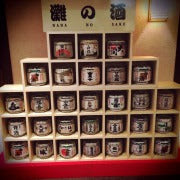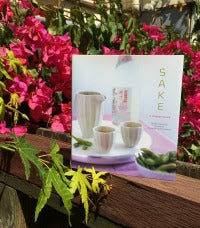Sake Top 10 – “The Top Ten Sake Facts!”

For the Top Ten, we usually like to focus on ten brews that are unique or have certain qualities that you should at some point try to further your sake education and experience. But this month, we want to provide you the top ten sake talking points for you to enjoy and share with friends as you describe your love of sake. It's a war out there, so we need you to continue with your efforts to convince folks that sake is the answer to their dreams. Herewith are ten sake selling points that should remind you how awesome sake truly is, and are useful for sharing with those friends and family members who have no clue!
10) ) There are only 4 ingredients in sake!
Come on you know them: rice, water, mold and yeast! Of course some sakes have a little distilled brewers alcohol, but on the whole these few ingredients are responsible for so many complex flavors. Amazing!
9) Sake is not only made in Japan!
It’s true! Sake is made in many countries from several Asian countries to Australia, Brazil, Canada, and the good old US of A.

8) Sake is fermented not distilled!
That’s why it is called a sake brewery, because sake is fermented like wine and beer. It is not a hard liquor.
7) Sake has 1/3rd the acidity of wine!
For those who easily get reflux, sake is a far friendlier libation!
6) Sake has an alcohol content similar to that of wine!
Sake is not as boozy as gin, vodka, or other spirits. It has an average alcohol content of 15-16%, which is a couple points above some beefy wines.

5) Sake is called Nihonshu, which means the wine of Japan!
We call sake sake and not saki! But in Japan, sake means all alcoholic beverage,s so the real name for sake is nihonshu.
4) Sake has no sulfites!
Sake is pasteurized, so it does not need a preservative like sulfites.
3) Sake has hundreds of aroma and flavor components like wine!
Anything that you can taste or smell in a wine you can find in sake. Sake does not simply taste just like rice. In fact, most sakes don’t taste like rice at all.

2) Sake has very low histamines!
Tired of getting the histamine wine headache or face blushing? Sake has far lower histamine levels and drinks far cleaner!
1a) Sake is 80% water!
When sake is in it’s final saleable form it is 80% water, and is one of the cleanest burning “fuels” in the alcohol market, which means far fewer post-drinking headaches.
1b) Sake can be served at more temperature points than any other alcohol!
How awesome is a beverage that can be warmed, chilled, frozen or kept at room temperature? Pretty awesome when you consider the weather and cuisines that go better with a different temperature sake.
